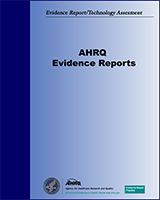NCBI Bookshelf. A service of the National Library of Medicine, National Institutes of Health.
West S, King V, Carey TS, et al. Systems to Rate the Strength Of Scientific Evidence. Rockville (MD): Agency for Healthcare Research and Quality (US); 2002 Apr. (Evidence Reports/Technology Assessments, No. 47.)
This publication is provided for historical reference only and the information may be out of date.
As discussed in previous sections, empirical evidence clearly guides quality assessment of systematic reviews and RCTs. By contrast, little evidence helps guide the evaluation of observational studies beyond good epidemiologic practice and principles. Comparability of subjects was the only empirically derived element we designated for observational studies, relating to the use of concurrent versus historical controls groups. Chalmers et al. noted that the use of nonrandomized trials with historical controls exaggerated treatment effects in studies of anticoagulation for acute myocardial infarction. 160 Concato, Shah, and Horowitz compared RCTs and observational studies using concurrent control groups for five clinical topic areas (BCG vaccine for tuberculosis, mammography to prevent breast cancer deaths, cholesterol lowering and the risk of trauma mortality, hypertension treatment, and the risks of both stroke and coronary heart disease). 169 They found that estimates of effect were similar for RCTs and observational studies when the observational studies were rigorous i.e., using concurrent controls.
Two studies provide empirical evidence of bias in observational studies related to competing interests, which we have termed funding and sponsorship. The Cho and Bero study noted that both RCTs and observational studies reported in symposia proceedings tended to show favorable treatment effects. 168 In a similar study comparing the publications found in symposia proceedings versus peer-reviewed journals, articles in symposia were more likely to have been supported by the tobacco industry and less likely to have government funding. 170 Multivariate analysis indicated that peer-review was an important quality criterion rather than source of funding. This study lends support for a quality criterion of peer-review as an empirically based domain.
- Observational Studies - Systems to Rate the Strength Of Scientific EvidenceObservational Studies - Systems to Rate the Strength Of Scientific Evidence
- Findings of Diagnostic Test Studies - Systematic Review of the Literature Regard...Findings of Diagnostic Test Studies - Systematic Review of the Literature Regarding the Diagnosis of Sleep Apnea
- Eulipoa wallacei voucher Rotterdam Museum cold shock domain-containing E1 protei...Eulipoa wallacei voucher Rotterdam Museum cold shock domain-containing E1 protein (CSDE) gene, partial cdsgi|663681793|gb|KF833574.1|Nucleotide
- phenylalanine--tRNA ligase alpha subunit [Mus musculus]phenylalanine--tRNA ligase alpha subunit [Mus musculus]gi|162138894|ref|NP_079924.2|Protein
Your browsing activity is empty.
Activity recording is turned off.
See more...
